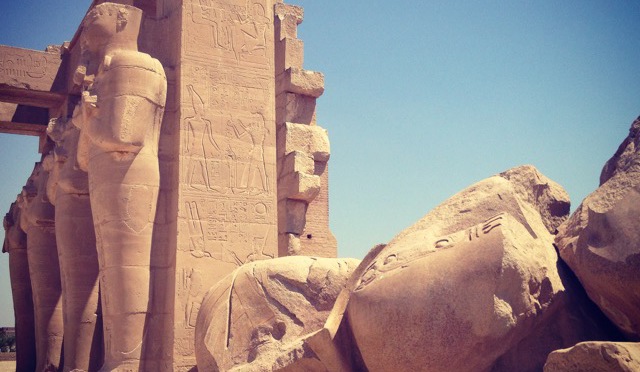Across the Nile from Luxor lies the Theban Necropolis, a collection of mortuary temples and tombs built over the course of almost fifteen centuries. From the ruined grandeur of the temples to the dark tombs lined with scenes of funerary rites, the site is breathtaking to visit. There is so much to see that we split our trip to the Theban Necropolis over two days, and even then we didn’t see everything that there is to see.
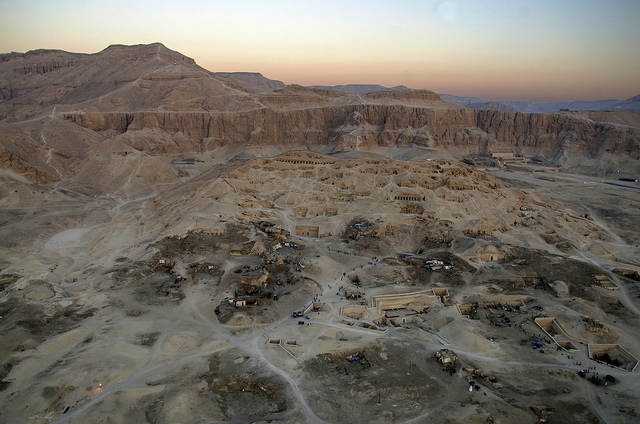
On Day 1 in the Theban Necropolis, we visited Medinet Habu, the Ramesseum, and the Valley of the Queens. I had such a hard time choosing pictures for this post – everything that we saw was so amazing, and I really wanted to share everything! I finally narrowed down the pictures, but, beware, there are still more here than you can shake a stick at.
But before we get to that: remember what I said about the touts in Luxor? The most frustrating experience we had with a tout occurred on our way to the Theban Necropolis.
As we were walking to the public ferry to transport ourselves from the eastern bank of the Nile (where Luxor is located) to the western bank (where the Theban Necropolis is located), a man approached us and attempted to sell us a trip across the river on his boat. (Let me just stop here and say that everyone in Luxor has a boat or knows someone that has a boat, and everyone wants to sell you a trip on said boat.) We declined his offer and kept walking. The public ferry costs a single Egyptian pound (around USD $0.14) per trip for tourists – Egyptians pay a quarter of that – and leaves frequently, seemingly every 5-10 minutes. Given that, there’s no reason to hire a private boat.
Another man – let’s call him Man A – who had been within earshot and walking in the same direction as us, chuckled and made a comment indicating that he understood why we would clearly prefer the ferry. We chatted with him politely for a moment while we walked, and then boarded the ferry. Man A also boarded the ferry and took a seat near us, turning around in his seat to try to talk to us. At this point, we realized that Man A was not just a chatty local but a man gearing up for a sales pitch. Uninterested in getting mired in the same kind of “exchange of ideas” that led to our fiasco at the Dodoma bus station, we decided to keep to ourselves during the ferry ride.
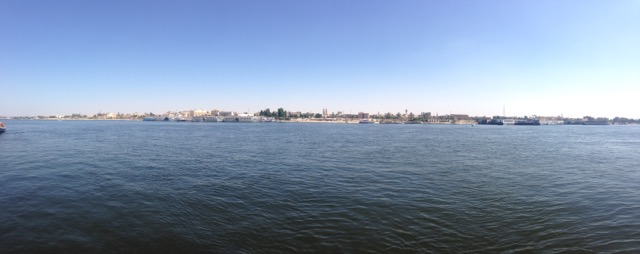
When the ferry docked on the other side of the river, Man A began his full-court press to sell us his services as a driver for the day. We weren’t in the market for a driver for the full day – we only planned to take a taxi to the ticket office and then walk from there – and so we told him that we weren’t interested. Although we still wanted someone to drive us to the ticket office, we didn’t like the way this guy had followed us from one side of the Nile to the other and then become aggressive, and we didn’t want to reward him with our business.
We talked to few other taxi drivers while Man A continued to be obnoxious. Eventually, we settled on a price with another driver – let’s call him Man B – which caused Man A to stomp off. Man B seemed friendly, and we followed him to where he told us he had parked his taxi … but he ended up just leading us to a car with Man A sitting in the driver’s seat!
We turned around and walked away. We hadn’t quite made it back to the ferry stop when Man B drove up next to us in another car, apologizing and trying to explain that, because Man A had “brought us” from the other side of the river, he had a claim on our business that day. We explained that Man A had not “brought us” anywhere – he had creepily followed us from the other side of the Nile, and we didn’t want to encourage such behavior, much less be in a car with him. Man B tried to convince us to go with him and we told him, no, we weren’t very impressed with him either, but, after a few rounds of back-and-forth, we decided to let Man B drive us to the ticket office for the already-agreed upon price.
On the way, Man B (whose name turned out to be Mohammed) stopped at the Colossi of Memnon so that we could get out and take some pictures. I love these guys – they originally fronted the tomb of Amenhotep II, which was the largest complex on the West Bank, but was plundered for masonry until nothing but the colossi remained. The north one was cleaved by an earthquake in 27 BC and thereafter was heard to “sing” at dawn until the statue was repaired in 199 AD.1
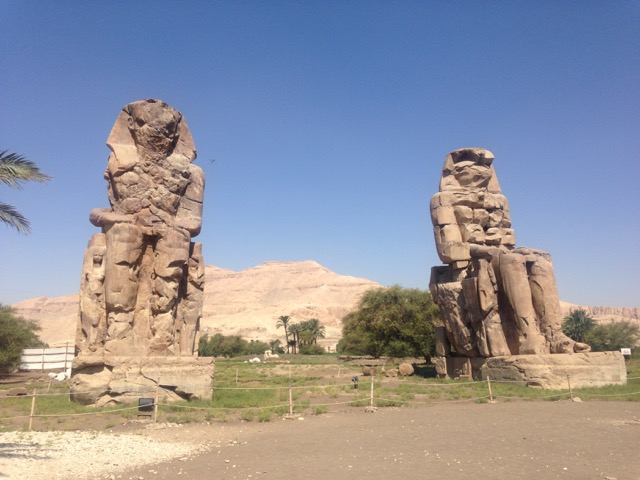
Once at the ticket office, Mohammed began negotiating to be our driver for the entire day. Knowing that we had a long, hot day of sightseeing ahead of us,2 and that, if we had a driver, we could see the Valley of the Queens in addition to our original plan of just Medinet Habu and the Ramesseum, we agreed to the modest sum he proposed.
Our first stop was Medinet Habu, which is the Arabic name for the mortuary temple of Ramses III. Medinet Habu is second only to Karnak in size and complexity, but it is better preserved. It’s a really incredible site.
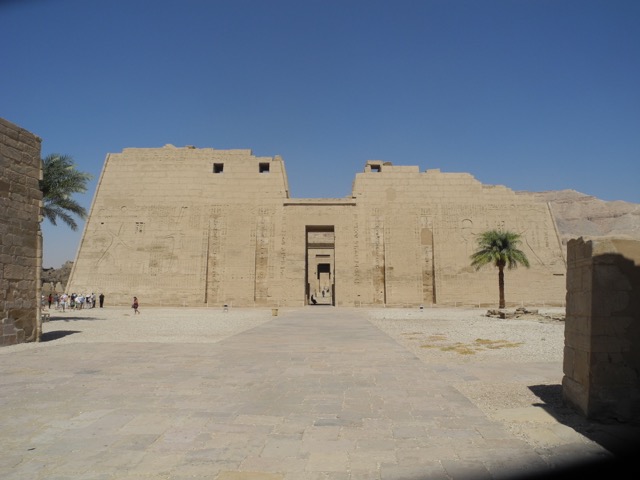
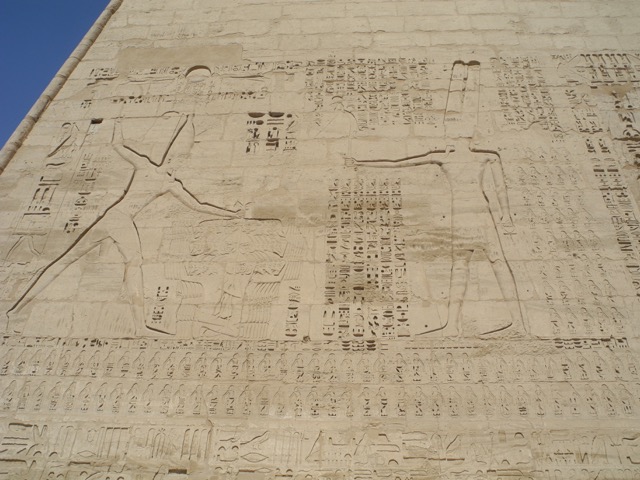
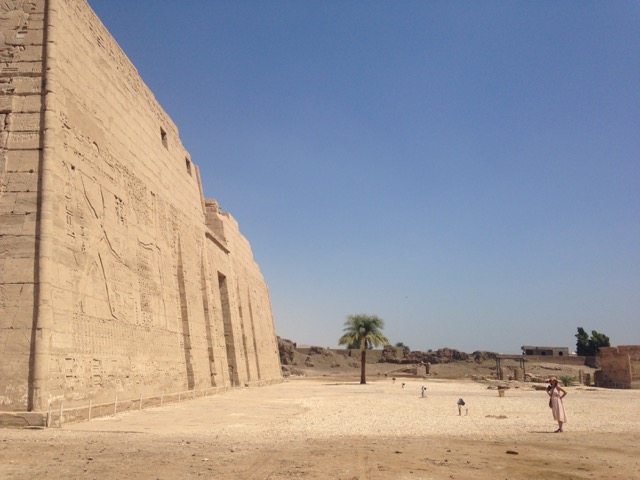
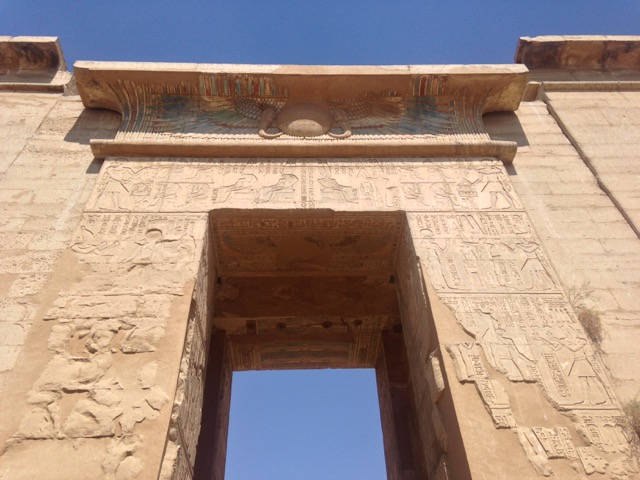
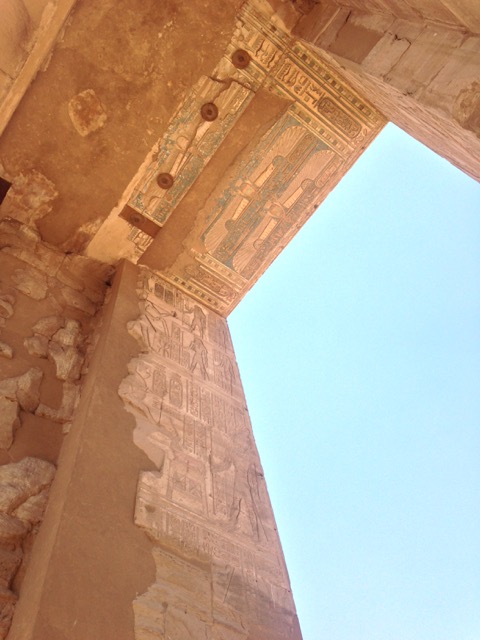
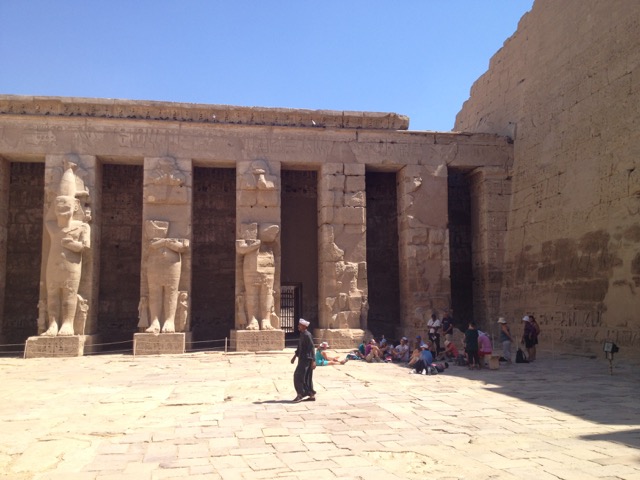
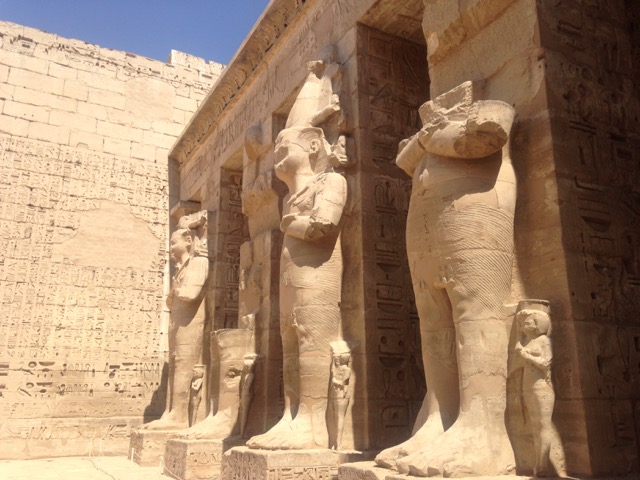
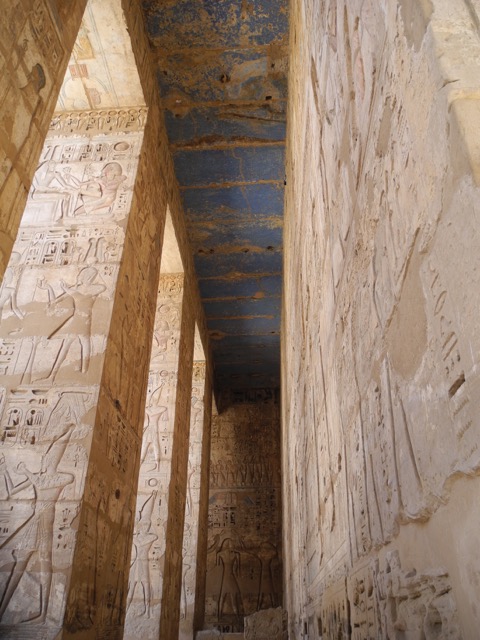
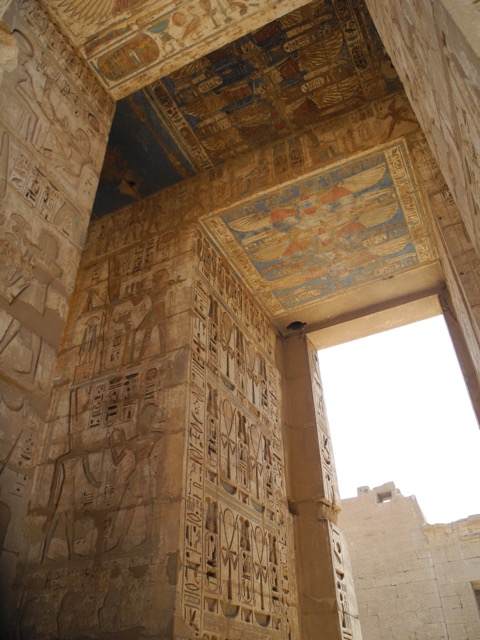
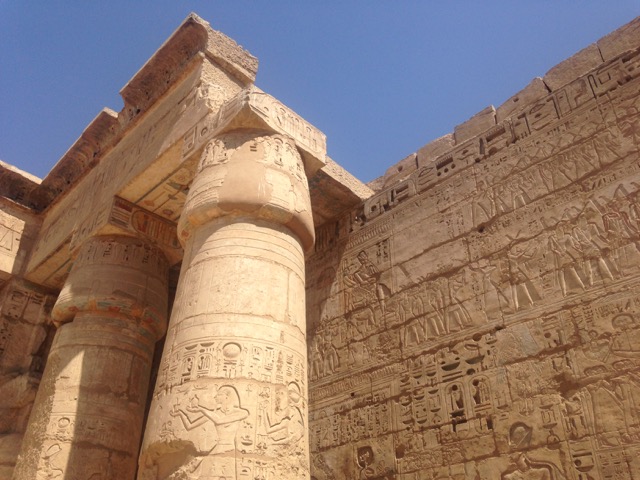
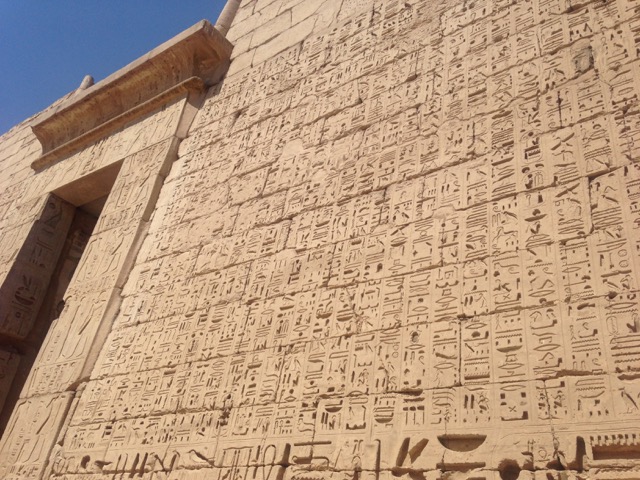
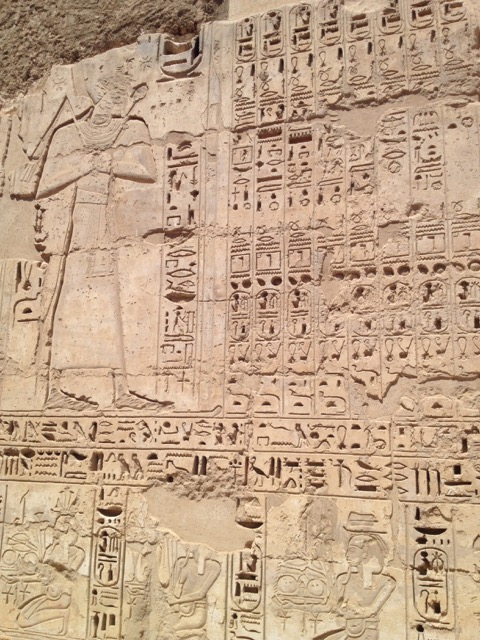
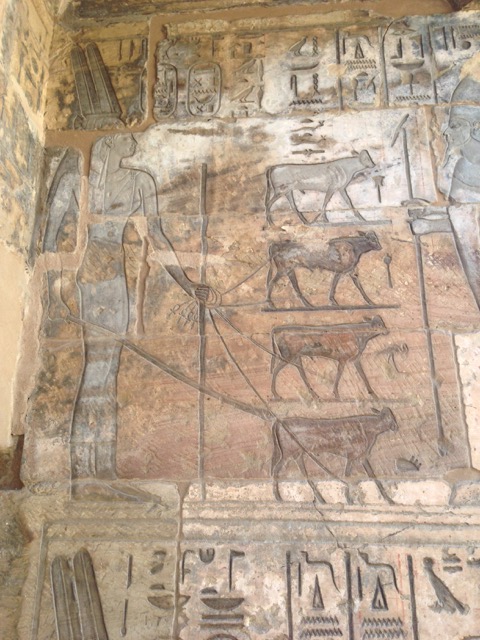
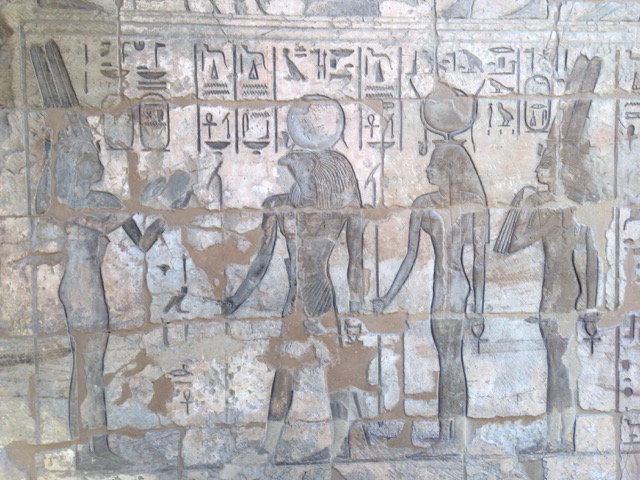
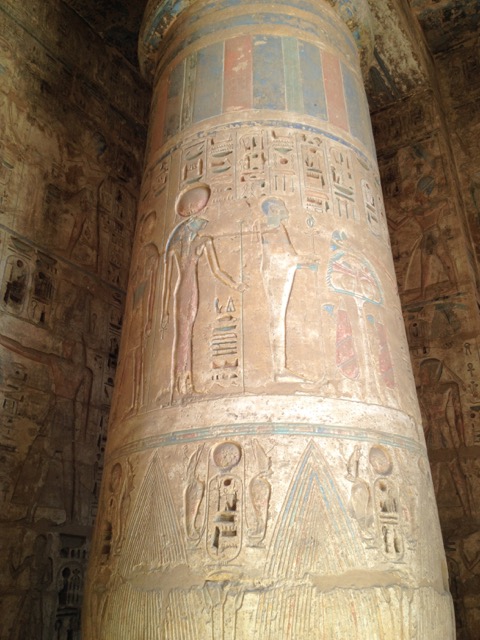
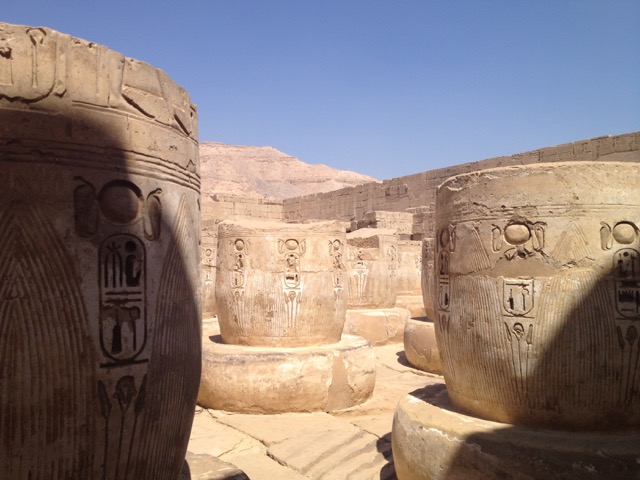
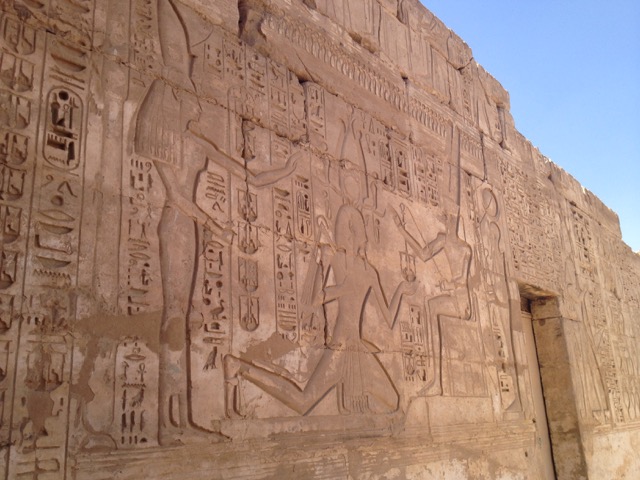
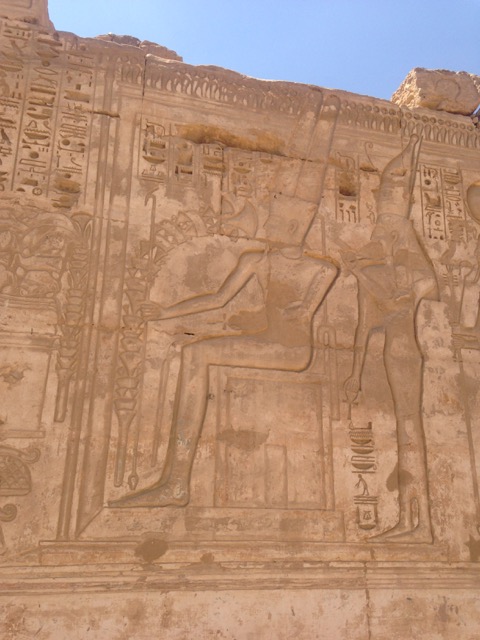
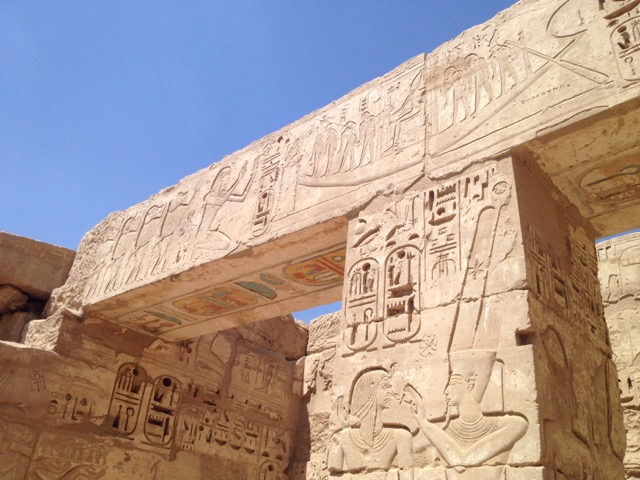
Next, we visited the Ramesseum, the mortuary temple of Ramses II. Because the temple was constructed on a plot of land that was annually inundated by the Nile, the temple has been largely toppled. Restoration projects have put it somewhat back together, but a great portion of the allure of the Ramesseum lies in its beautiful ruins status. Most notably, the temple once featured a colossus of Ramses II (as you might expect from a temple constructed by Ramses II), which now lies in pieces where it fell, its “shattered visage” inspiring Shelley’s famous poem “Ozymandias.”
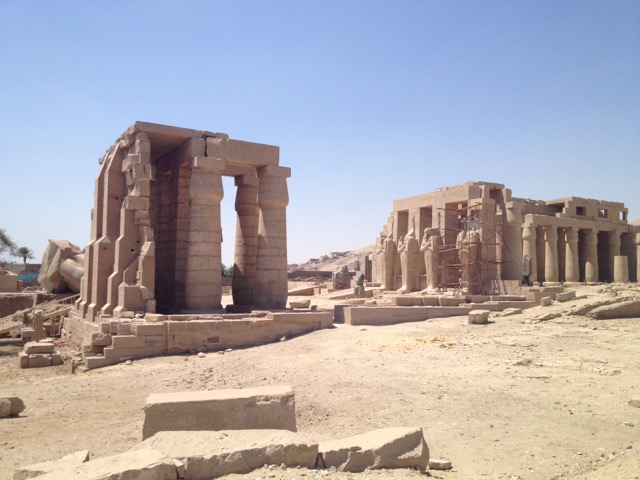
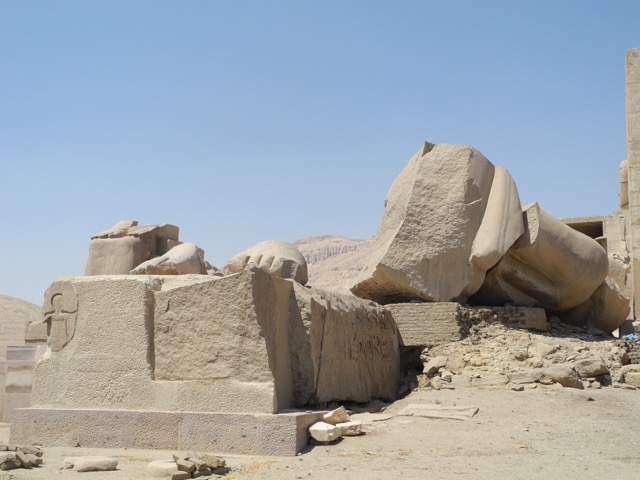
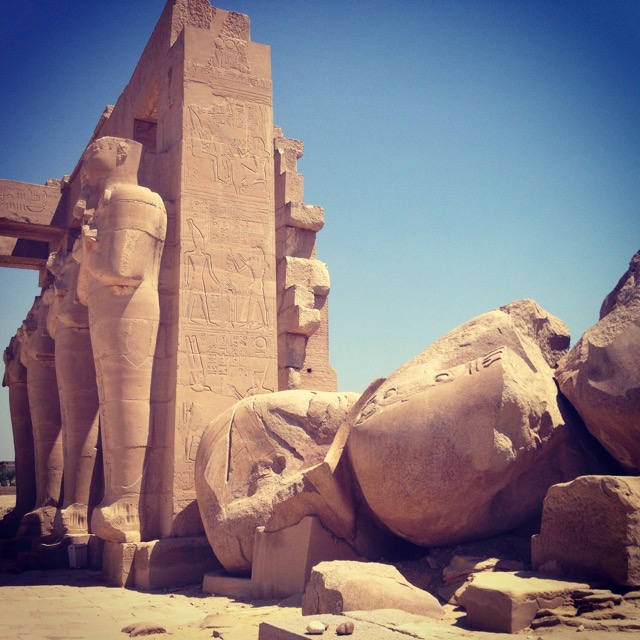
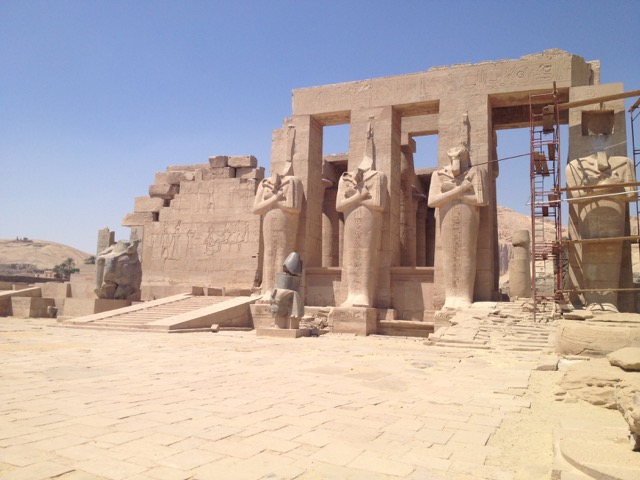
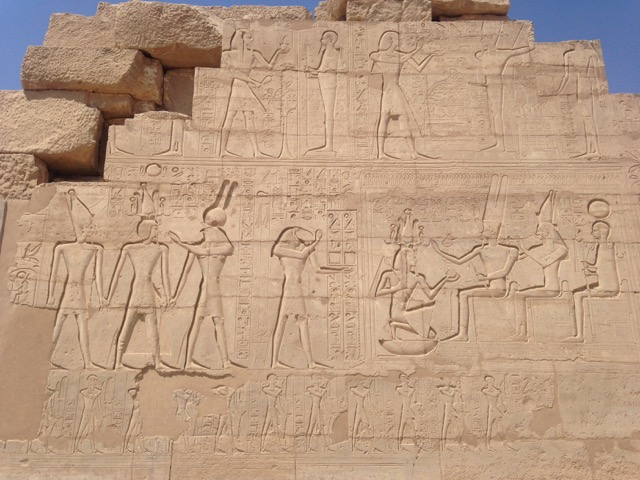
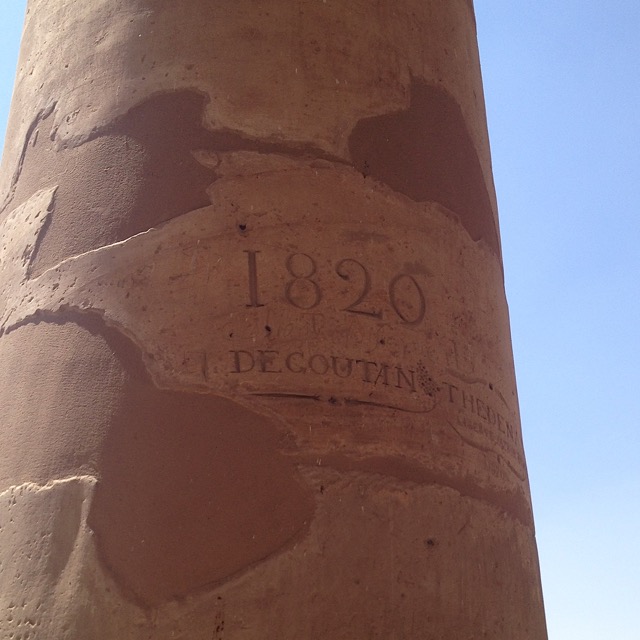
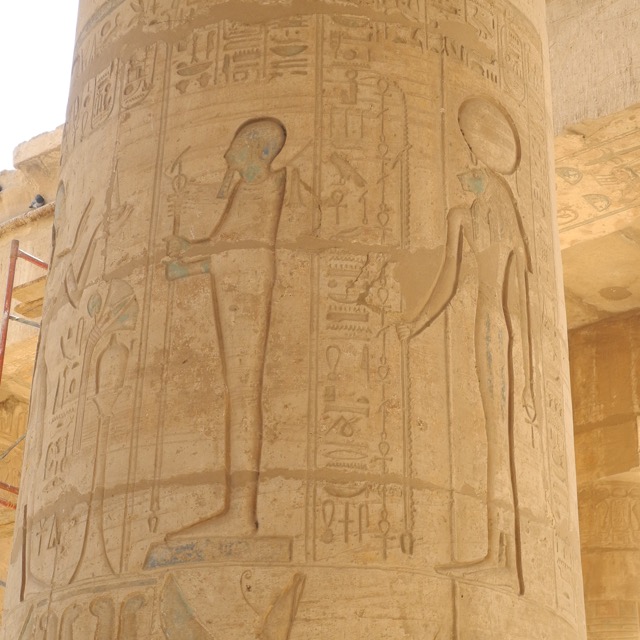
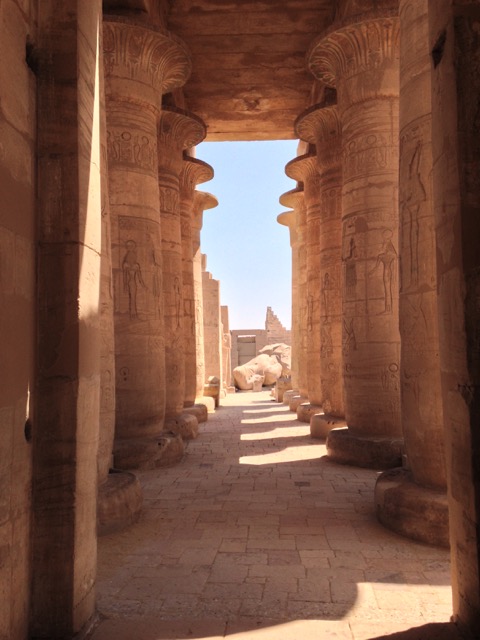
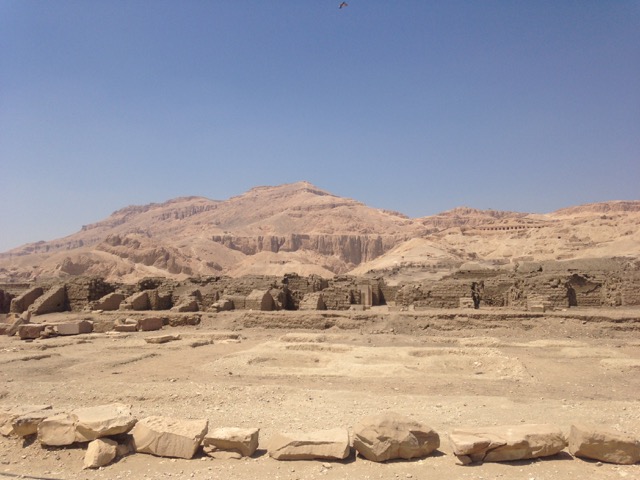
Finally, we visited the Valley of the Queens. Despite the name, the Valley of the Queens contains not only the tombs of queens from the XVIII, XIX, and XX Dynasties (1550-1070 BC), but also royal family members and other elites. There are thought to be more than 70 tombs in the Valley of the Queens, but only a very small fraction are available to visit.
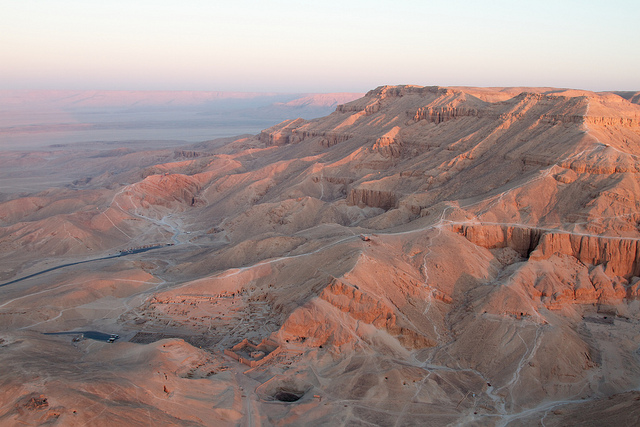
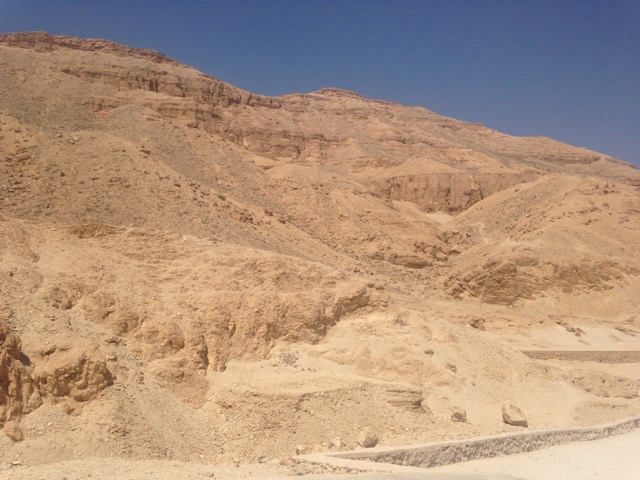
The tomb of Nefertari (QV66) is alleged to be the most beautiful tomb in the Valley of the Queens, but the interior is so fragile that only certain VIPs are permitted to visit it. Steps are being taken to preserve all the tombs, in fact, which is why photography is not permitted inside them. To give you a taste of what the interiors look like, click on the links for the tombs we visited – there are at least a few pictures there.
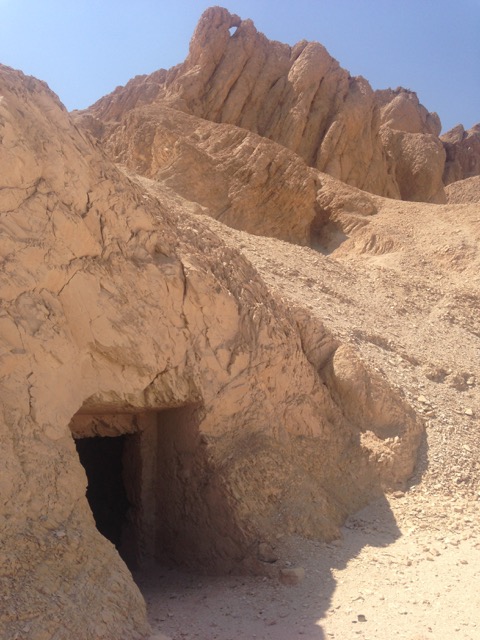
During our visit, we visited three tombs: (i) the tomb of Amunhirkhepshef (QV55), a son of Ramses III, which tomb is reputedly the second best tomb in the valley after the tomb of Nefertari; (ii) the tomb of Khaemweset (QV44), another of the sons of Ramses III and one who died during a smallpox outbreak; and (iii) the tomb of Queen Titi (QV52), one of wives of the Ramessid pharoahs during the XX dynasty.
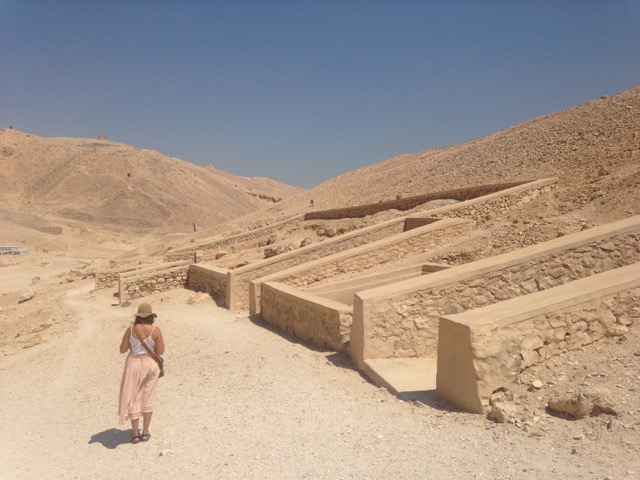
Where We Ate:
☆ Al-Sahaby Lane Restaurant. This place was basically impossible for us to find (it is on a side street off the bazaar, making it difficult to spot), but we really enjoyed it once we got there. We took a seat on the rooftop terrace overlooking the Nile and had delicious cold, fresh mango juice followed by hummus, eggplant dip, pita, ta’amiya, and stuffed grape leaves. The host even turned on the a/c (on the terrace!) so that we would be more comfortable, but we told him we didn’t need it.
☆ The Lantern. This is the highest rated restaurant in Luxor, and it was conveniently located near our hotel. We loved it – the food was good, the atmosphere was nice, the woman that runs it was lovely. I had a vegetarian cottage pie, which was decedent and wonderful, and Marc had a beef curry. We couldn’t resist the lemon meringue pie for dessert, either. Could you?

1 The “singing” is thought to have been either particles breaking off as the stone expanded in the morning light, or wind reverberating through the cracks.
2 It was well over 100°F that day, and there is little shade to be found. I remembered being overheated on my previous 2007 visit, which was in the more temperate month of March.

